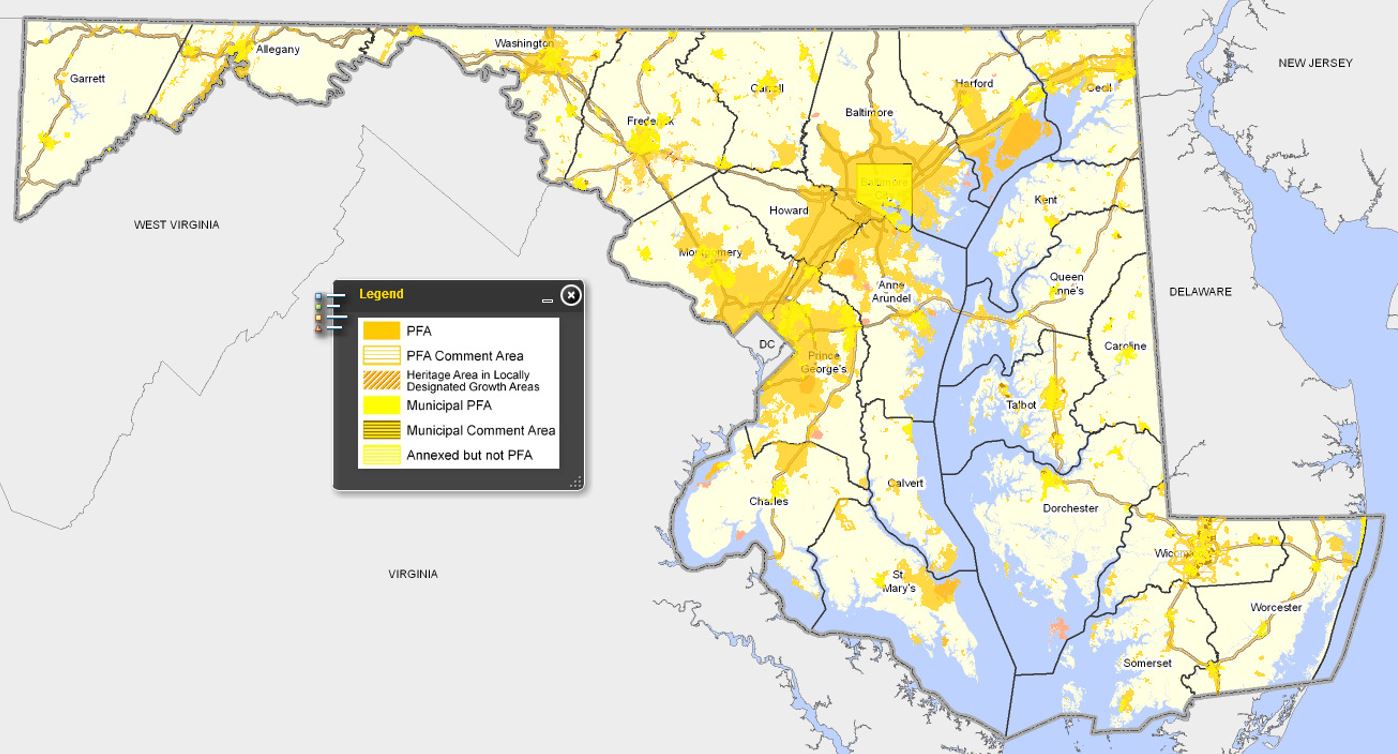
Project Contacts
Project Sponsors
Maryland State Builders Association
NAIOP Maryland Chapters - The Association for Commercial Real Estate
Overview
This project identified perceptions of barriers to development and redevelopment inside Priority Funding Areas (PFAs), primarily within the Baltimore-Washington area. For 14 years, the Maryland Smart Growth program has been the state’s growth management strategy. The program, enacted in 1997, established PFAs as areas jointly identified by the state and local governments targeted for future growth. Under the law, state funding for development-related infrastructure is provided only for projects located within designated PFAs. Though well-intended, the program is not without limitations that are well-documented. One assertion often heard from planners and developers alike is that state and local regulations hinder or prohibit growth from occurring inside PFAs. As a result, developers are forced to build at lower densities inside PFAs and other development is deflected to areas outside PFAs, which not only defies the purpose of the Smart Growth program, but can also result in increased construction costs as the projects do not qualify for infrastructure funding.
For this study, the Housing Strategies Group interviewed 47 stakeholders of growth in Maryland. These included representatives from county and municipal planning departments, planning consultants, land use attorneys, organizers from local community-based groups, staffers at prominent statewide nonprofit advocacy organizations, and developers.
